Our vegetable garden is divided into south and north areas. The south area is geometric consisting of 18 open raised beds. The North garden is more fragmented and contains a large and no longer maintained asparagus bed, five smaller beds in production, plus several patches of Jerusalem Artichokes, weeds, and a compost area.
Here are a couple north beds. The closest bed gave us some greens, radishes, spinach and turnips, and now carrots and the last of the beet planting. The 18 tomato plants in this bed are doing well.
The old asparagus bed is on the left, then a bed of eggplant, and a bed of leeks behind. The trellis has cukes on the left and climbing squash on the right, with tomatillos at the end. Behind this are Russian Comfrey, the weeds and trees.
I always planted tomatillos with the tomatoes using the same trellising approach. They were always a pain to control. This year I’ve woven the plants into the concrete mesh wire that I use as a trellis material for the squash and cukes. I’m sure I’ll be much happier with this approach.
The two beds of strawberries produced well. The bed on the right has blackberry plants in front and raspberries behind. Both are just starting to have ripe fruit. This bed will stay in place for several years before I move it to a new location.
Sweet Potatoes on the left. I cover them with fabric at night, just in case deer show up. The center messy bed are herbs, with oregano in front. The oregano is going to get flattened by the big squash vines coming in from the right, but it’s tough and will live through the incursion well. It’s always a challenge trying to figure out how to trail the large squash vines.
The trellised peas are just about spent. We had to wrap them nightly with some cheap plastic fencing to protect them from deer which did some early damage, but have not been a problem since we started fencing and spraying a deer repellent around the entire garden area. That seems to be working. We’ve got two small stands of corn that are setting ears now, and pepper plants here and there throughout the garden.
I’m continuing with my approach to potatoes that I started a few years ago: dig a couple trenches in the bed, plant the potatoes at the bottom of the trenches, rake up the soil left over from the trenches and bed around the potatoes to hill them up.
This bed had garlic. As soon as it was harvested, I leveled the bed and planted green beans. This works great.
This year I used wider spacing on my tomatoes, just two across instead of three. That forced me to add another bed of tomatoes, but we love ’em. I’m using a fungicide called Monterrey Complete Disease Control which has, so far, checked the leaf blight that had been a pain for me for the last few years.
We’ve already eaten lots from this year’s garden and I can tell we are going to have a bountiful harvest from here until it freezes.

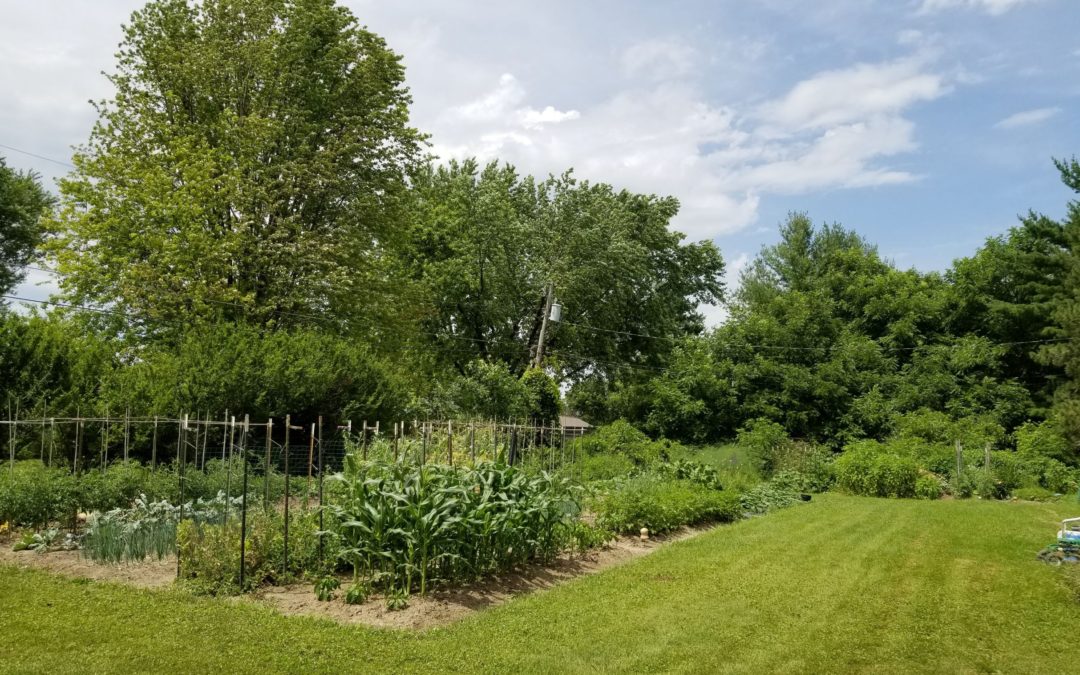
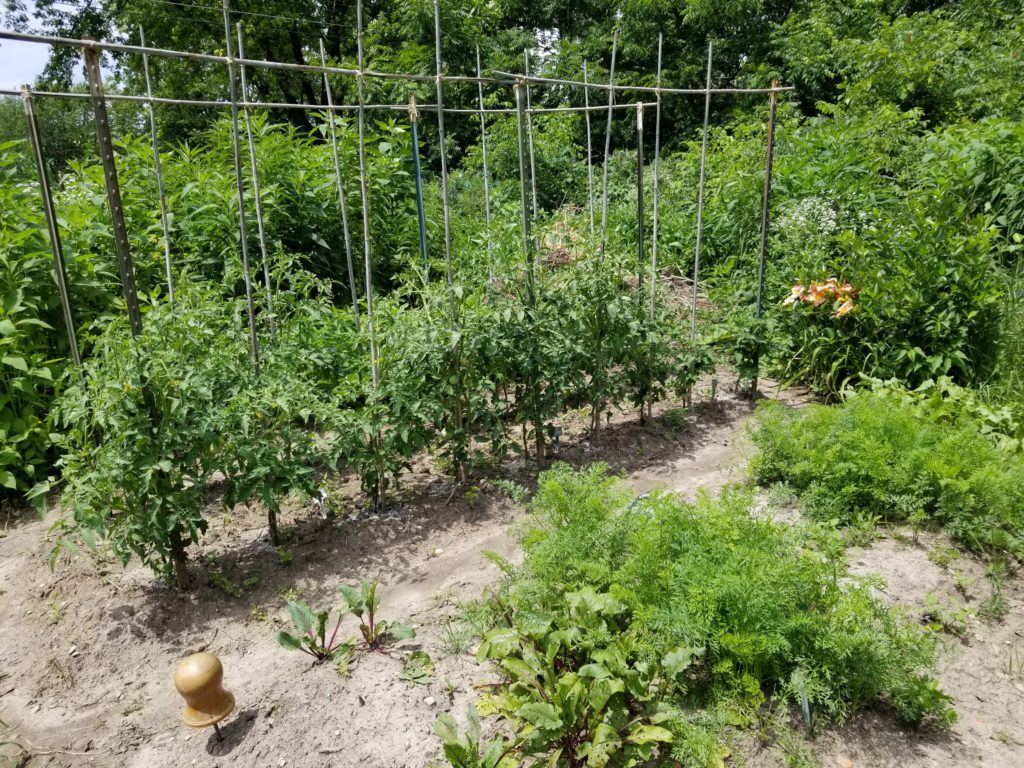

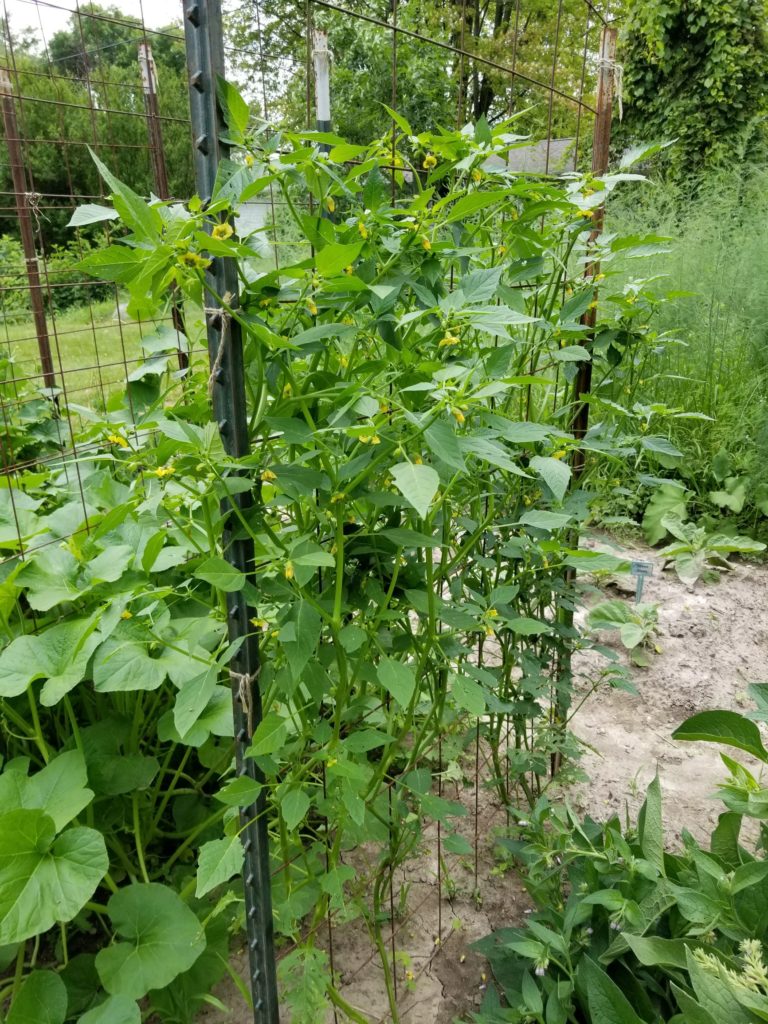
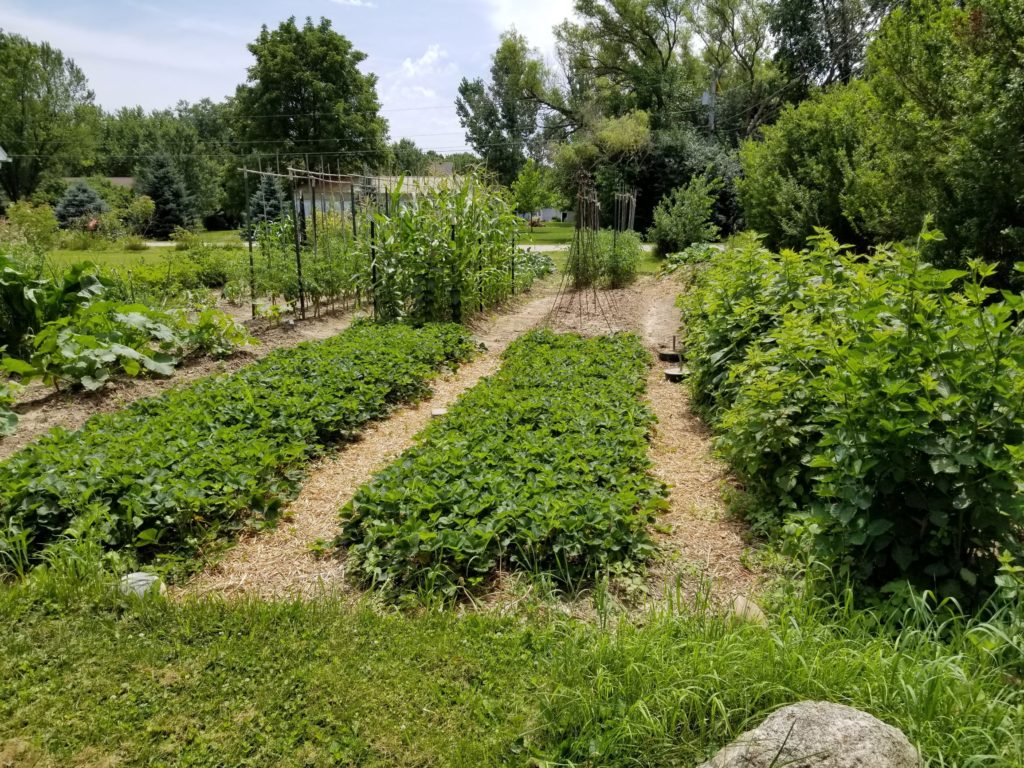
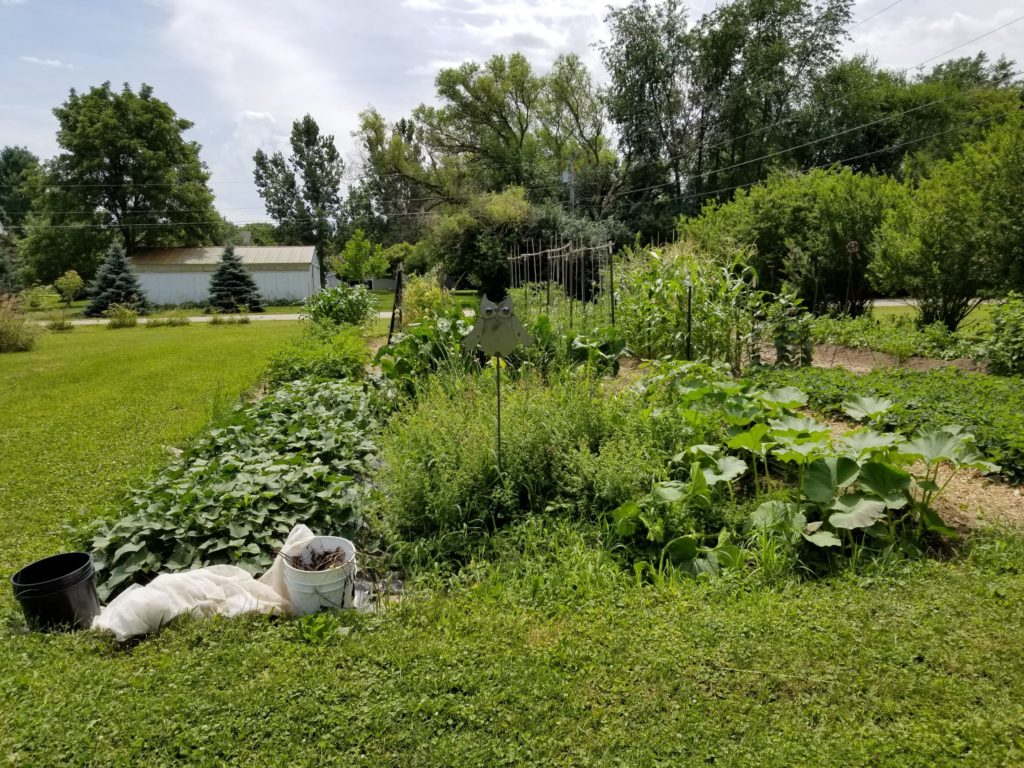
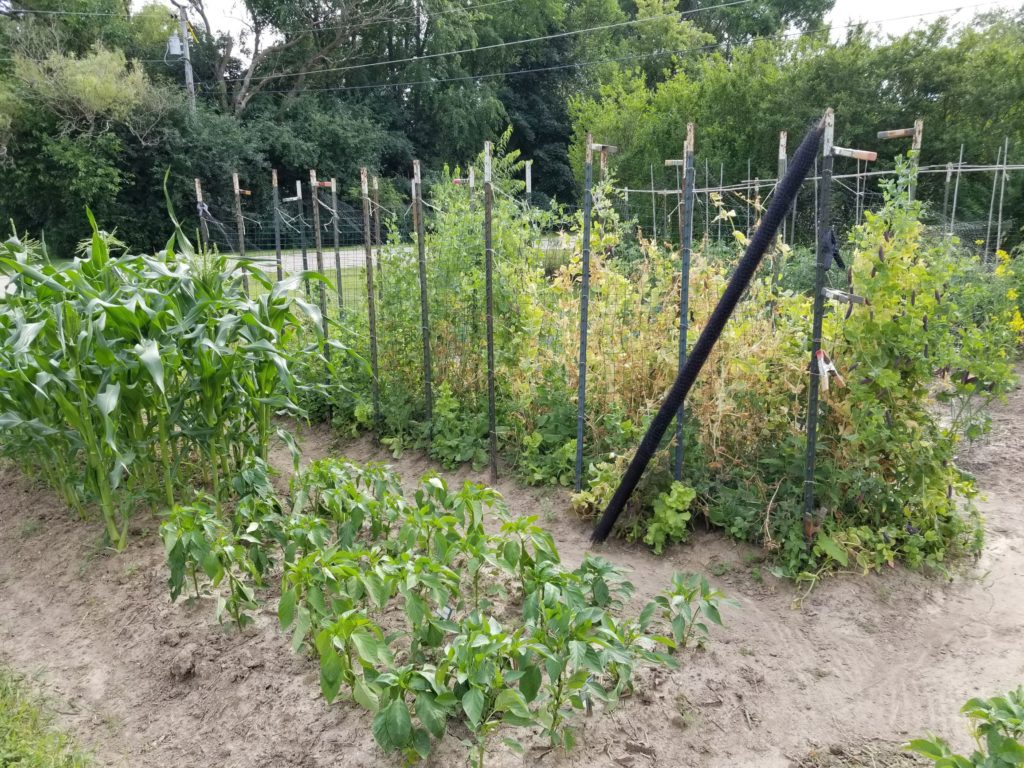
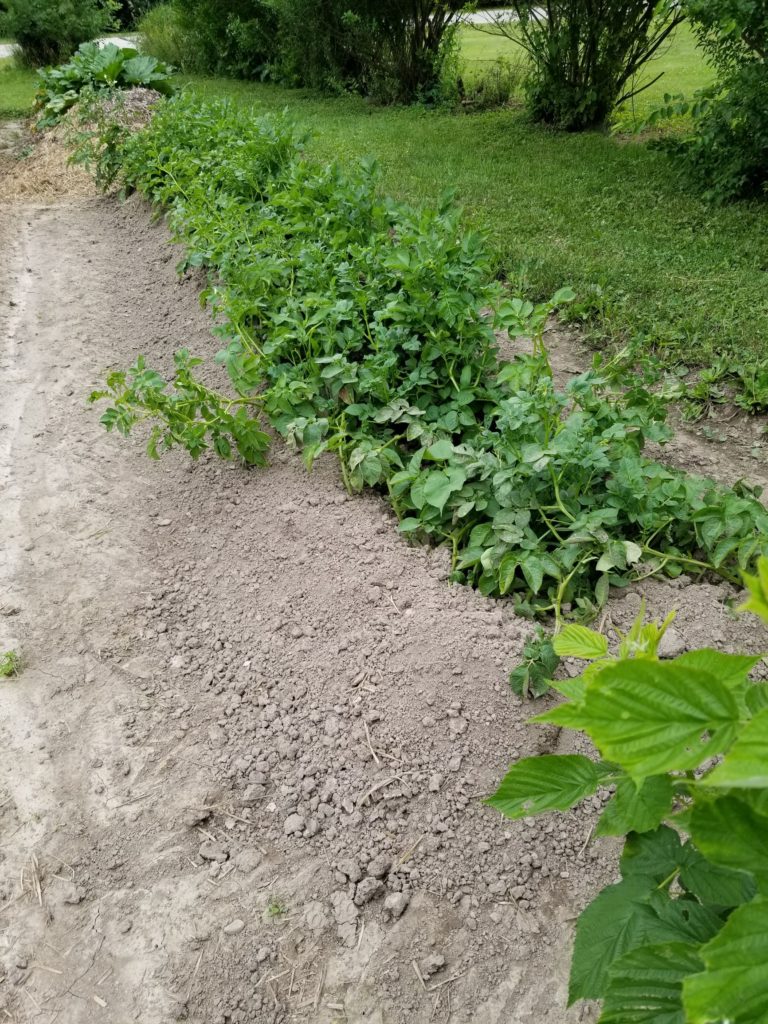
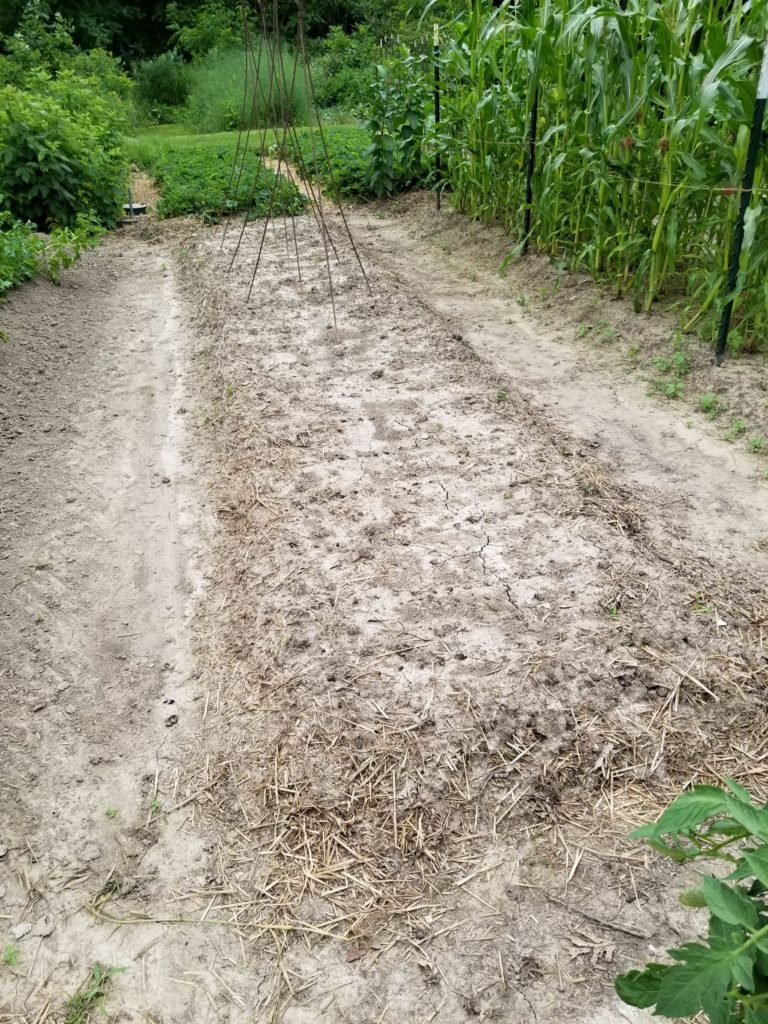
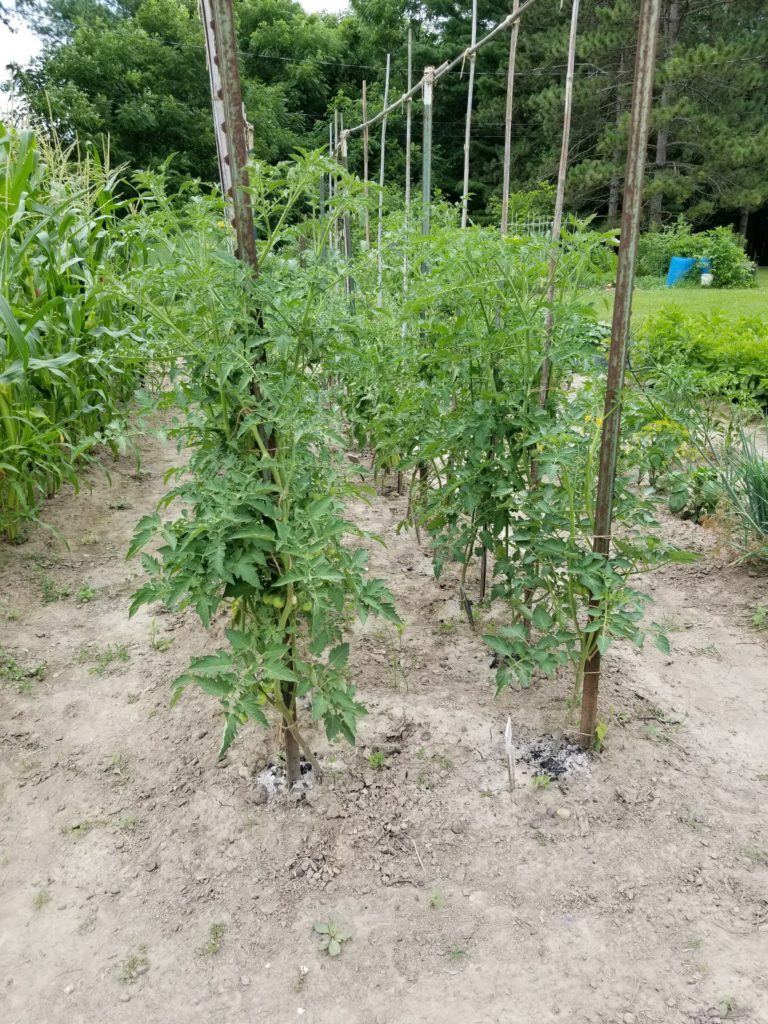

I’m always inspired by your gardens. Everything looks really good this year. My gardens are looking good too. Happy harvesting.
Thanks for the photos! Impressive! I’m a hillside gardener in Vermont and I like seeing those flat plots. My first garden in Iowa was flat — 49 gardens ago! But a southern slope isn’t so bad. Hard to believe you aren’t completely fenced. Here the deer have even eaten tomato plants. What is your deer repellant? Do you have to cover the wandering squash vines at night also? I’ve started having them climb so as not to take up so much room within the fenced area, which also makes it easier to find the squash bug eggs. I’ve solved the deer problem with the fence but now it’s the voles. My cat used to help with those but she died this spring. So we’re making tall wooden raised beds with hardware cloth underneath. Looking forward to some no-bending gardening. Hope your season continues to be a good one. Other than being super dry and big temp fluctuations, it’s going well here, too. Thanks for your newsletter.
Your gardens look great! It’s been a good gardening summer in MA. I have to tell you that the long handled cobra head has saved my back this year! We had lots of rain and so lots of weeds. That tool makes easy work of weeding!
Thanks!
Lovely gardens!
I enjoyed the pictures and the printed word…..I feel as if I visited a friend’s garden….
Thank you, Marie
P.S. Remember to wear a mask when you leave your home even if it is just to the mailbox
on your property or have a mask in your pocket at all times….Wash your hands and
social distance………
your garden looks great!
How do you deal with the Japanese beetles?
They are my biggest problem. Keep coming back!
Awesome veggie garden dear
CobraHead friends! Love it!!!
It’s a pleasure to see a garden still producing this time of year. Here in south Louisiana everything has gone over, too hot. Looking forward to starting seeds for our fall garden.
When my son lived in Austin, TX, he told me about how gardening was so much different in the south than up here. We don’t garden in the winter and the garden is most often covered with snow.
Hi Paul. Thanks for the note. I hope all is well.
Hi Ed. I hand pick Japanese beetles. If you do it daily, you can keep them in control. I use a funnel contraption as shown here: https://blog.cobrahead.com/2009/07/30/hand-to-hand-combat/
Deer are really bad around here, but putting up a fence is a real pain. I’ve been using a repellent called Deer Defeat for the first time this year and it appears to be working. I also cover some crops with agricultural fabric, and I’ve started using a super lightweight plastic fencing to wrap individual crops like peas and corn ( to keep off the raccoons and squirrels).
Hi Chris. I hope all is well.
Hi Ed. I handpick them daily. It goes fast with the funnel contraption:
https://blog.cobrahead.com/2009/07/30/hand-to-hand-combat/
Milk is best deer repellent. Approx one pint to a two gal watering can and sprinkle right onto plants. Works 100 percent of time but you have to repeat after a rain or after 2 o3 days of sunny weather.Very inexpensive compared to chemicals.